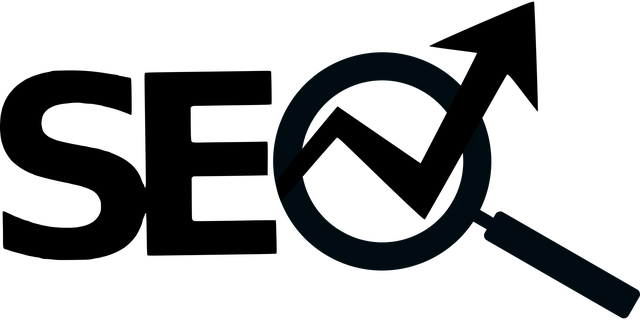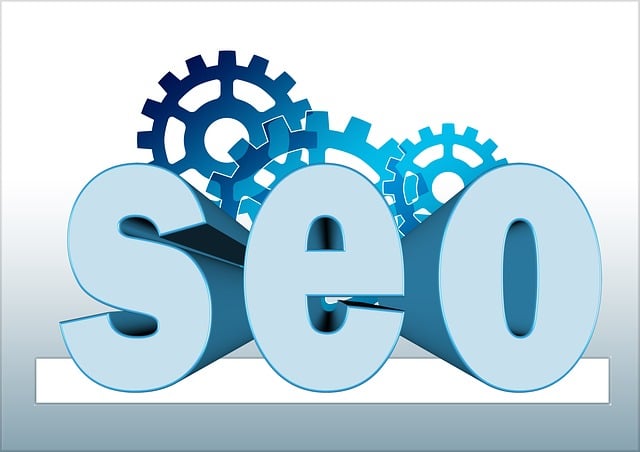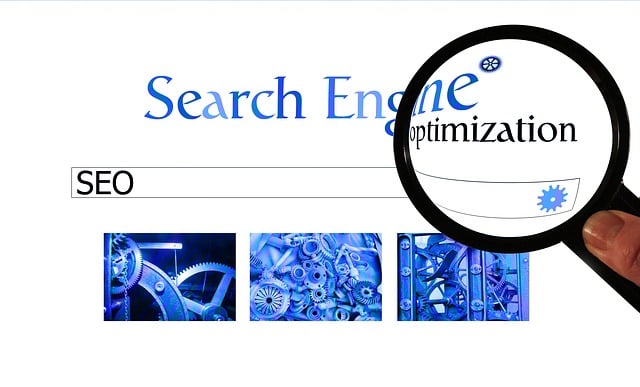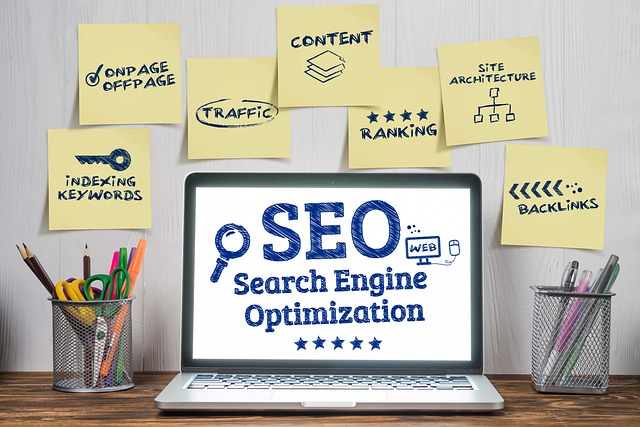A well-structured website is key to higher search engine rankings. This involves creating logical page hierarchies, using breadcrumb navigation, and implementing internal links to guide users and algorithms. Prioritizing key pages with valuable content, optimizing meta tags, and integrating UX considerations further enhance SEO. Regular audits and tracking of metrics like organic traffic and bounce rates are essential for continuous improvement in search visibility.
Looking to elevate your website’s online presence and rank higher on search engines? Improving your website structure is a powerful SEO tip that often gets overlooked. A well-organized site not only enhances user experience but also plays a pivotal role in how search engines crawl and index your pages. This article guides you through crucial steps, from identifying key pages to optimizing URL structures and integrating UX considerations, offering practical SEO tips for ranking higher.
Understanding Website Structure and Its Impact on SEO

A well-structured website is a fundamental aspect of achieving higher rankings in search engine results pages (SERPs). Understanding website structure involves recognizing how different pages connect and relate to one another, creating a logical flow that not only enhances user experience but also signals to search engines the importance and relevance of your content. In terms of SEO tips for ranking higher, optimizing this architecture is crucial.
Each page on a website should have a clear purpose and be easily accessible from other relevant pages. This hierarchical organization tells search engine crawlers where to go and what to prioritize. For instance, using breadcrumb navigation helps both users and search engines understand the context of each page within the site’s content ecosystem. Additionally, ensuring internal linking is done effectively allows “link juice” to flow throughout the site, indicating to SEO algorithms which pages are most valuable.
Identifying Key Pages for Optimal SEO Performance

When optimizing your website’s structure for search engine optimization (SEO), identifying key pages is a strategic step to enhance your online visibility and rank higher. These key pages are often the most important assets on your site, offering valuable content that aligns with user search queries. Focus on creating or refining high-quality pages that serve as hubs of information within your niche. For instance, if you run an e-commerce business, product category pages and individual product listings could be key pages, as they directly address customer needs and inquiries.
SEO tips for ranking higher encourage prioritizing these essential pages in your website’s navigation. Ensure they are easily accessible from the homepage or main navigation menu. Optimizing meta titles and descriptions for each page is also crucial, as search engines use this information to display your site’s content accurately in search results. Additionally, regular content updates on these key pages keep them relevant, encouraging repeat visits and improving user experience, which are all factors that search algorithms consider when determining website rankings.
Creating a Logical Site Architecture

Creating a logical site architecture is one of the most effective SEO tips for ranking higher. This involves organizing your website’s content in a way that makes sense to both users and search engines. Start by identifying your primary topics and creating categories or sections that group related content together. A clear hierarchy ensures that each page has a specific purpose and provides a seamless user experience, encouraging visitors to explore more of your site.
A well-structured site architecture also facilitates easier navigation, which is crucial for SEO. Use intuitive menus, breadcrumbs, and internal links to guide users (and search engine crawlers) through your website. Each page should have relevant anchor text links pointing to other related pages within your site, creating a network of interconnected content that signals to search engines the importance and relevance of your topics. This strategic approach not only improves user engagement but also boosts your site’s authority in the eyes of search algorithms.
Enhancing Internal Linking Strategies

Improving internal linking strategies is a crucial SEO tip for ranking higher on search engines. By connecting relevant pages within your website, you create a seamless user experience while helping search engine crawlers understand your site’s hierarchy and content relationships. This simple yet effective strategy allows users to navigate effortlessly, reducing bounce rates and encouraging deeper engagement with your content.
When implementing internal links, focus on using descriptive anchor text that accurately represents the target page. Ensure these links are contextually placed within relevant content, as this signals to search engines that your pages are interconnected and valuable. Prioritize linking to high-quality, authoritative pages within your site, as it boosts their authority and indirectly benefits other related content.
Optimizing URL Structures for Search Engines

In the pursuit of ranking higher on search engines, optimizing your website’s URL structure is a crucial SEO tip that should not be overlooked. URLs are more than just web addresses; they serve as a map for both users and search algorithms, indicating the relevance and hierarchy of your pages. A well-structured URL includes relevant keywords, makes use of hyphens to separate words, and keeps the overall length concise. For instance, instead of `www.example.com/page123`, consider `www.example.com/seo-tips/url-structure`. Such improvements make it easier for search engines to understand your content’s focus, enhancing both user experience and SEO performance.
Furthermore, consistent URL structures across your site send a clear signal to search engines about the organization of your content. This consistency ensures that your web pages are indexed accurately, leading to better visibility in search results. When implementing these SEO tips for ranking higher, remember that a structured URL is just one part of the puzzle. It needs to be supported by other on-page optimizations, like meta titles and descriptions, to create an effective digital footprint that attracts organic traffic.
Implementing Effective Meta Tagging Practices

Implementing effective meta tagging practices is a crucial SEO tip for ranking higher on search engines. Meta tags are essential elements within the HTML code that provide search engines with critical information about your webpage’s content, context, and relevance. By optimizing these tags, you can significantly impact how search algorithms perceive and index your site, ultimately influencing its position in search results.
When it comes to SEO tips for ranking higher, focusing on descriptive and tailored meta titles and descriptions is key. The title tag, typically displayed as the page’s title in search results, should accurately represent the content while incorporating relevant keywords. Meanwhile, the meta description offers a concise overview of what users can expect, encouraging clicks with compelling language. Regularly reviewing and updating these tags to align with your latest content strategies ensures that your website remains optimized for both search engines and potential visitors.
Integrating User Experience (UX) Considerations

When it comes to improving website structure for SEO, integrating user experience (UX) considerations is paramount among SEO tips for ranking higher. A well-designed UX ensures that visitors can easily navigate your site, find relevant content, and have a positive overall experience. This not only keeps users engaged but also sends strong signals to search engines about the quality and usability of your website. Incorporate clear menus, intuitive search functions, and fast loading times to enhance user experience, as these factors directly influence both user satisfaction and search engine rankings.
Additionally, UX considerations play a crucial role in enhancing accessibility, which is another factor that search engines prioritize. By making your site accessible to users with disabilities, you not only expand your audience reach but also align your website with ethical SEO practices. Remember, the better the user experience, the more likely it is that visitors will stay longer, interact with content, and even share it with others—all of which contribute to improved search engine rankings.
Regularly Auditing and Updating Website Structure

Regularly auditing and updating your website’s structure is a crucial SEO tip for ranking higher. Search engine algorithms are constantly evolving, and what works today might not be as effective tomorrow. By conducting periodic audits, you can identify areas of improvement and ensure your site remains optimized. This includes checking for broken links, outdated content, and slow loading times—all factors that can negatively impact user experience and SEO performance.
Update your website structure to reflect changes in your business or industry. As your company grows or new trends emerge, your offerings and target audience may shift. A well-organized and regularly updated site reflects this evolution, making it easier for both users and search engines to navigate and understand your content. This proactive approach can significantly contribute to better SEO rankings.
Measuring Success: Tracking Key SEO Metrics

Measuring success is a vital aspect of improving your website’s structure for SEO and achieving higher rankings. By tracking key SEO metrics, you gain valuable insights into the effectiveness of your optimization efforts. These metrics include organic traffic volume, bounce rate, time on page, and pages per session—all crucial indicators of user engagement. Organic traffic volume reveals how many visitors are reaching your site through search engines, while a low bounce rate suggests that users are finding relevant content and staying longer.
Time on page and pages per session further emphasize user interaction. If visitors are spending more time browsing and exploring your site, it indicates that the content is engaging and valuable. Utilizing SEO tips for ranking higher involves regularly monitoring these metrics to identify trends, areas of improvement, and strategies that resonate with your audience. This data-driven approach ensures that your website’s structure and content remain optimized for both search engines and users’ needs.
